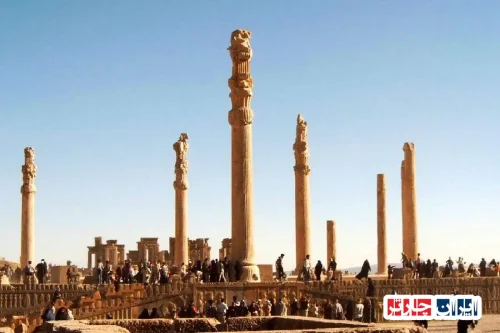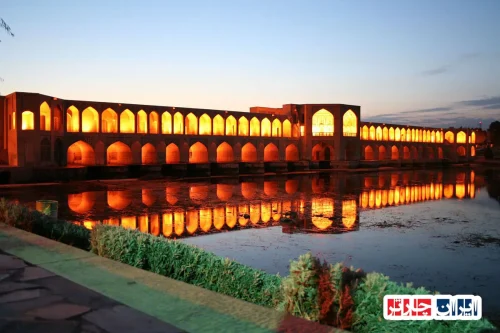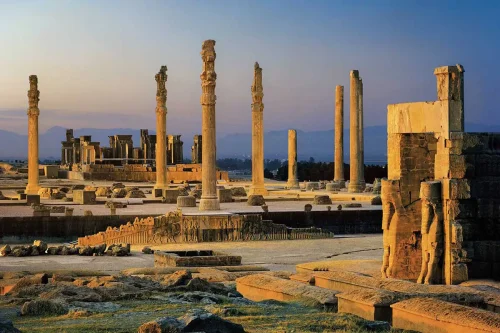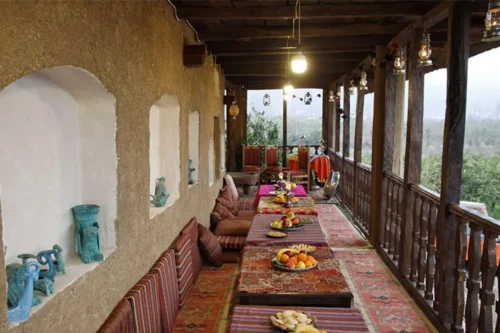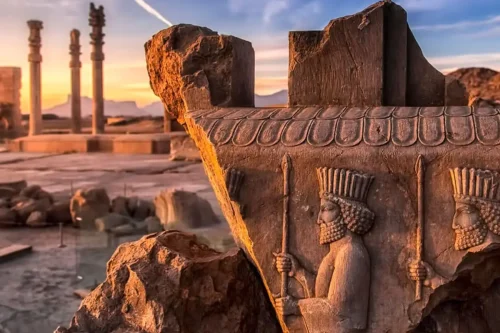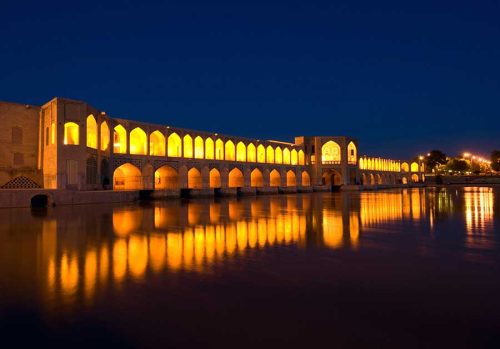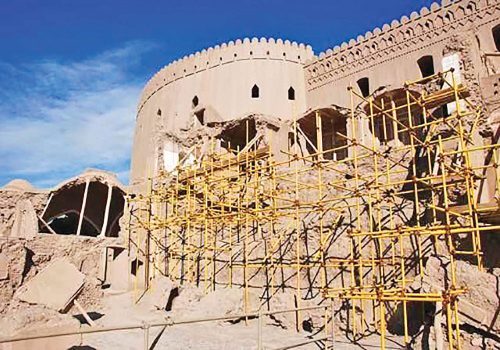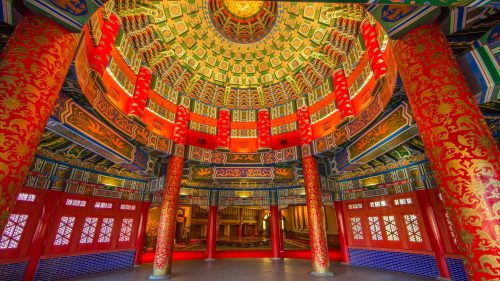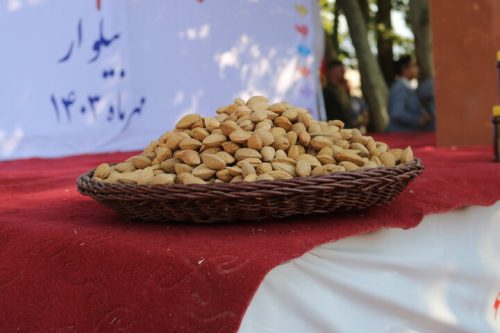UNWTO Leader Affirms Iran’s Pivotal Role in Shaping Global Tourism: A New Era in Global Tourism Trends
sustainable tourism development-Iran Charter
sustainable tourism development-Iran Charter
sustainable tourism development-Iran Charter
Defining Iran’s Role in Tourism Exhibitions and Its Impact on Sustainable Development
In today’s ever-evolving global tourism landscape, Iran is emerging as a critical hub for hosting international tourism exhibitions that promote sustainable development and cultural exchange. Recent developments underscore that the UNWTO Leader Affirms Iran’s Pivotal Role in Shaping Global Tourism by showcasing innovative strategies that blend local tradition with modern tourism practices. Through high-profile international events, Iranian authorities have cultivated an environment where strategic dialogue and hands-on collaboration pave the way for advancements in sustainable tourism. The country’s focused efforts in integrating local heritage with global tourism trends have attracted multifaceted partnerships among governmental agencies, private sector enterprises, and international organizations. By emphasizing eco-friendly practices, intellectual exchange and the use of cutting-edge technologies, Iran is redefining industry standards and establishing a benchmark for responsible tourism development. This approach not only fosters a vibrant marketplace for tourism innovations but also drives investment in cultural preservation and modern infrastructure. As a catalyst for change, these exhibitions have provided a unique platform for stakeholders to share best practices, exchange ideas, and implement solutions that address pressing challenges such as environmental sustainability, urban development, and economic diversification. Ultimately, Iran’s dynamic participation in these events illustrates a commitment to enhancing tourism quality while nurturing the rich cultural fabric that defines the nation. In this innovative framework, strategic dialogue continues to promote best practices that significantly contribute to the global narrative on sustainable tourism development.
Fundamental Principles of Iran’s Role in Shaping New Tourism Strategies
Iran’s journey towards reinventing its tourism framework rests on foundational principles that blend organizational coherence with a visionary outlook. As demonstrated by the UNWTO Leader Affirms Iran’s Pivotal Role in Shaping Global Tourism, the nation’s strategic blueprint emphasizes collaboration, transparency, and the integration of indigenous cultural narratives into modern tourism strategies. The country has focused on leveraging its historical and natural assets while capitalizing on international best practices. This process involves uniting various governmental departments with private industries and specialized institutions, creating an ecosystem where robust policy frameworks encourage innovation. Over the past few years, the evolution of these policies has promoted efficient resource management, enhanced infrastructural development, and the development of integrated tourism circuits that connect urban centers with rural heritage sites. Furthermore, continuous investment in educational initiatives and technical training ensures that local talent evolves in tandem with global market demands, thereby boosting competitiveness on the international stage. Such progressive policies have fostered an environment where immersive cultural experiences and sustainable living become the norm, rather than the exception. By nurturing an atmosphere of trust and mutual respect among all stakeholders, Iran is setting the stage for a comprehensive transformation in how tourism is perceived, planned, and managed.
Innovative Approaches to Enhancing Tourism Quality through Iran’s Influence
Fostering innovation in the tourism industry requires a forward-looking mindset and incorporation of dynamic solutions, a strategy that Iran is rapidly embracing. The UNWTO Leader Affirms Iran’s Pivotal Role in Shaping Global Tourism by pioneering initiatives that revitalize tourism infrastructure and elevate service standards across the board. Innovative approaches range from introducing technology-driven visitor experiences and digitized service platforms to curating thematic routes that highlight the country’s diverse historical, natural, and cultural resources. By capitalizing on emerging trends—such as immersive digital tours and interactive guides—Iran is setting new milestones in enhancing tourist experiences and operational efficiencies. In addition, collaborative research initiatives and public-private partnerships have encouraged the development of tailor-made solutions that address both local and international market needs. This integrative model not only bolsters the country’s competitiveness but also demonstrates a steadfast commitment to quality improvement and cultural responsibility. Through rigorous training programs, quality certifications, and continuous performance benchmarking, the Iranian tourism sector has managed to align itself with global standards while preserving authentic local identity. These progressive measures have led to significant improvements in customer satisfaction, paving the way for higher tourist influx and a richer cultural exchange.
The Importance of Strategic Collaborations Between Public and Private Sectors in Iran’s Role Development
A sustainable tourism ecosystem thrives on the synergy between diverse stakeholders, and Iran’s trajectory in this field stands as a testament to the benefits of robust public-private collaborations. Under the guiding principle that the UNWTO Leader Affirms Iran’s Pivotal Role in Shaping Global Tourism, Iranian policymakers have actively sought enduring partnerships that merge public interests with private sector efficiency. This collaborative spirit has resulted in the establishment of joint initiatives and development projects that harness the strengths of each partner, creating a fertile ground for innovative solutions and improved service delivery. By bridging the gap between policy formulation and practical implementation, these alliances facilitate the smooth exchange of resources, expertise, and technological innovations. Moreover, coordinated efforts in planning and executing major tourism events have not only elevated local capabilities but also projected Iran’s potential as a global destination for cultural and leisure tourism. In this context, the sharing of knowledge and best practices has become central to developing sustainable tourism models that benefit communities, support economic growth, and drive long-term environmental stewardship. The growing network of partnerships continues to challenge old paradigms and encourages a culture of continuous improvement within the tourism industry.
National and International Experiences in Steering Iran’s Role in the Tourism Industry
Drawing upon a wealth of national expertise and international insights, Iran is refining its strategies to meet the diverse needs of the global tourism market. The assertion that the UNWTO Leader Affirms Iran’s Pivotal Role in Shaping Global Tourism resonates with efforts to integrate lessons learned from both domestic success stories and cross-border collaborations. Over the years, Iran has meticulously observed, adapted, and applied global best practices to its own tourism blueprint, focusing on areas such as visitor management, heritage conservation, and digital innovation. International exchanges, study tours, and collaborative workshops have enriched the knowledge base of local practitioners, resulting in enhanced operational efficiency and a more visitor-centric approach. This culture of learning has facilitated the development of integrated tourism circuits that communicate a seamless narrative of Iran’s cultural and historical wealth. By blending traditional experiences with modern technology, the country is building an evolving model that caters to the expectations of a sophisticated international audience while remaining rooted in authentic local traditions. These concerted efforts have not only strengthened domestic tourism infrastructure but have also boosted Iran’s reputation as a destination where history and modernity coexist harmoniously.
Boosting Structural Collaborations as a Catalyst for Iran’s Emerging Role in Tourism
The evolution of Iran’s tourism industry is increasingly driven by an emphasis on structural collaborations that leverage the complementary strengths of various sectors. In an era where the UNWTO Leader Affirms Iran’s Pivotal Role in Shaping Global Tourism, establishing firm alliances among infrastructure developers, cultural institutions, and business entities is seen as pivotal to sustained growth. Strategic collaboration has spurred improvements in transport connectivity, urban renewal projects, and the modernization of tourism facilities, all of which contribute to creating a seamless travel experience. Through concerted efforts, stakeholders are pooling resources to overcome logistical challenges and to capitalize on emerging opportunities in niche tourism segments such as eco-tourism and experiential travel. These alliances have enabled the pooling of intellectual and financial capital, fostering an environment where groundbreaking projects can be envisioned and executed with precision. In addition, integrated communication strategies have ensured that the message of Iran’s progressive tourism vision reaches a global audience, further stimulating international interest and cooperation. The collective drive behind these initiatives has created a robust support network that underpins the nation’s ambition to set new benchmarks in tourism excellence.
Future Prospects Based on Iran’s Role in Shaping Modern Tourism Infrastructure
Looking forward, the prospects for Iran’s tourism industry are exceptionally promising, driven by a strategic focus on modernizing infrastructure and embracing emerging technologies. The recent declaration that the UNWTO Leader Affirms Iran’s Pivotal Role in Shaping Global Tourism has sparked renewed interest and investment in state-of-the-art facilities and innovative service models. Plans are well underway to develop integrated tourist hubs, upgrade transportation networks, and enhance connectivity between cultural heritage sites and modern urban centers. These forward-thinking initiatives are designed to create cohesive tourism circuits that not only showcase the country’s rich historical legacy but also meet the evolving needs of international travelers. As part of this ambitious vision, stakeholders are prioritizing sustainability, digital transformation, and service excellence to build a resilient tourism ecosystem. The convergence of public vision and private initiative is expected to drive significant economic benefits, generate employment opportunities, and further cement Iran’s status as a sought-after destination on the global stage. With a clear roadmap for development and continuous commitment to process improvement, the nation is poised for a future where tourism serves as a cornerstone for cultural exchange and economic prosperity.
Key Success Factors in Iran’s Role and Synergy in the Tourism Sector
The sustained success in Iran’s tourism sector can be attributed to several key factors that work synergistically to enhance overall performance and visitor satisfaction. Central to this achievement is the recognition that the UNWTO Leader Affirms Iran’s Pivotal Role in Shaping Global Tourism, positioning the nation as a proactive participant in the global dialogue on tourism excellence. One of the primary success factors is the rigorous emphasis on continuous improvement and capacity building across all layers of the industry. This involves investing in talent development, harnessing technological advances, and reinforcing quality management systems that collectively drive competitiveness. Moreover, a strong commitment to preserving cultural heritage while adopting innovative practices has allowed Iran to strike a delicate balance between tradition and modernity. Collaborative management, comprehensive planning, and an integrated approach to service delivery have led to the enhancement of both tangible infrastructure and the overall tourist experience. The convergence of these efforts has resulted in a resilient framework that accommodates rapid changes in global trends and responds effectively to market demands. This holistic approach ensures that every facet of the tourism experience—from initial visitor engagement to post-visit interactions—is addressed with a strategic, solutions-oriented mindset.
Integrating Modern Policies and Strategic Approaches in Iran’s Role Development
In the realm of tourism management, the integration of dynamic policy frameworks with forward-thinking strategic approaches is essential for driving lasting change. Iran’s recent progress exemplifies this trend, as evidenced by the acknowledgement that the UNWTO Leader Affirms Iran’s Pivotal Role in Shaping Global Tourism. By aligning modern policies with practical, ground-level strategies, Iran has created a model that incorporates advanced digital solutions, regulatory enhancements, and participatory governance practices. This integration ensures that planning and implementation are not mutually exclusive but work in tandem to support elevated service standards and sustainable growth. Through comprehensive policy reforms and strategic initiatives, the country is able to address challenges such as market fluctuation, environmental protection, and regional disparities effectively. Coordinated efforts across all levels of government and industry ensure that resources are allocated efficiently and that initiatives are monitored and optimized continuously. The outcome is a robust tourism sector that not only recognizes present opportunities but is also well-prepared to adapt to future changes. This symbiotic relationship between policy and practice ultimately reinforces Iran’s status as a pivotal player in a globalized tourism landscape, ready to deliver exceptional experiences to visitors from around the world.
Frequently Asked Questions
- What is the Tehran Tourism Exhibition?
- The Tehran Tourism Exhibition is an event designed to showcase international tourism experiences and foster cross-country collaborations, contributing to the growth of the tourism sector.
- What is the importance of the Tehran Tourism Exhibition for the tourism industry?
- It creates valuable networking opportunities between public and private sectors, paving the way for new investments and facilitating an exchange of expertise.
- How can one participate in the Tehran Tourism Exhibition?
- Participation is available through online registration via the official website, where detailed information regarding dates, venue, and procedures is provided.
- What are the benefits of participating in this exhibition?
- Participants benefit from enhanced brand visibility, networking with international industry professionals, and the opportunity to explore new business avenues.
- What role does the government play in organizing the exhibition?
- The government plays a key role by offering financial support and regulatory guidance, ensuring the event is organized efficiently and contributes to the sector’s development.
- How can the private sector contribute to this event?
- The private sector contributes by introducing innovative projects, incorporating modern technologies, and establishing strategic partnerships to enhance the overall impact of the event.
- What is the significance of international interactions at the exhibition?
- International interactions facilitate the exchange of best practices, help in attracting foreign investment, and are essential for the sustainable development of tourism.
- What is the future outlook for the Tehran Tourism Exhibition?
- With the integration of advanced technologies and innovative ideas, future exhibitions are expected to offer more interactive experiences and create even greater business opportunities.
- How can Iran enhance its role in global tourism?
- By capitalizing on local strengths, improving service quality, and forging strategic international partnerships, Iran can significantly boost its profile in the global tourism market.
- How do international organizations contribute to the development of tourism in Iran?
- International organizations bring valuable expertise and technical support, assisting in the creation of modern tourism strategies and helping attract foreign investments.
- How can the experiences from the exhibition improve tourism practices?
- Insights and successful case studies from the exhibition inspire new strategies and provide practical guidance for improving tourism services and operations.
- What is the importance of strengthening bilateral cooperation in tourism?
- Strengthening bilateral cooperation promotes the exchange of knowledge and expertise, builds mutual trust, and opens up collaborative business opportunities in various sectors.
- What value do joint meetings at the exhibition add to the tourism sector?
- Joint meetings offer a platform for discussion and collaboration, leading to the development of new ideas and policies that benefit the entire tourism industry.
- How can shared capacities between government and private sectors transform tourism?
- By pooling resources and coordinating efforts, shared capacities between sectors enhance service quality, attract new investments, and drive transformative initiatives in tourism.
- Why is precise planning important in organizing tourism activities?
- Detailed and accurate planning ensures that events are executed efficiently, leading to higher satisfaction among visitors and stakeholders alike.
- How does Iran Charter benefit from the Tehran Tourism Exhibition?
- Iran Charter leverages the exhibition framework to enhance its services, broaden its network, and explore new investment opportunities. For more details, please visit irancharter.ir.
- What initiatives does Iran Charter implement to support tourism growth?
- Iran Charter focuses on improving service quality, establishing strategic partnerships, and introducing innovative solutions that foster both domestic and international tourism growth.


